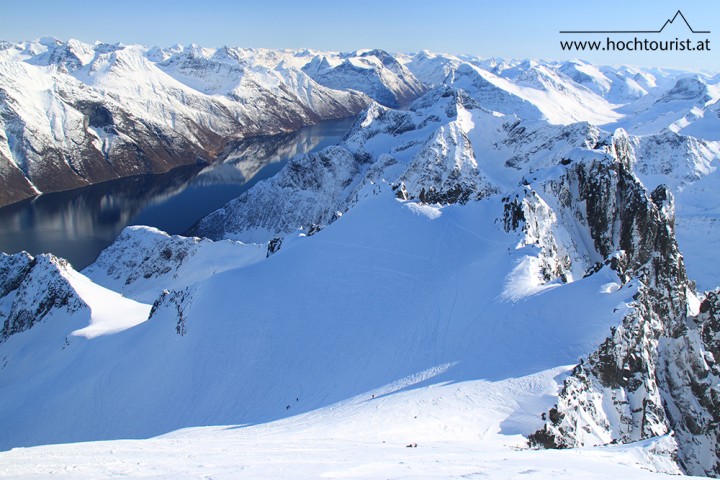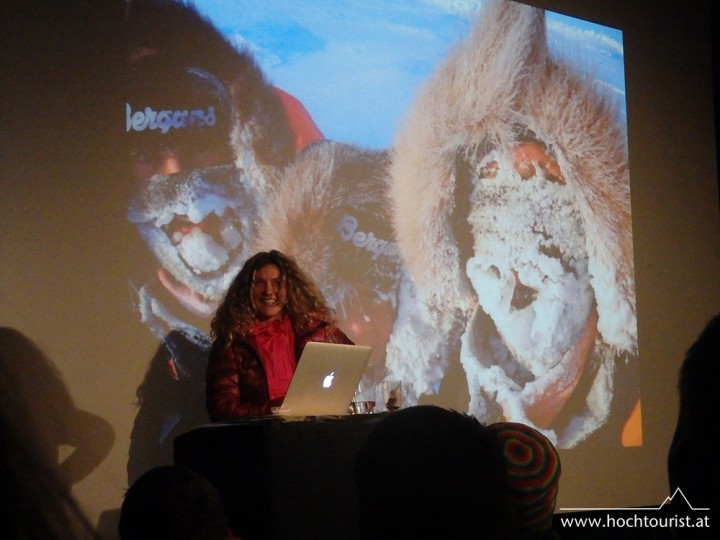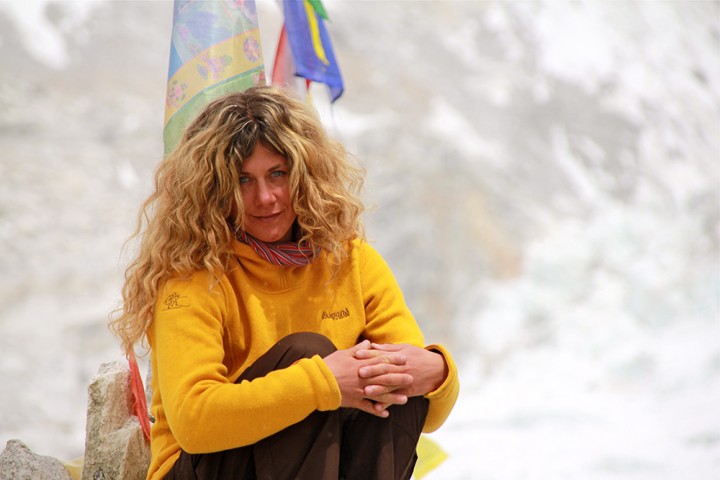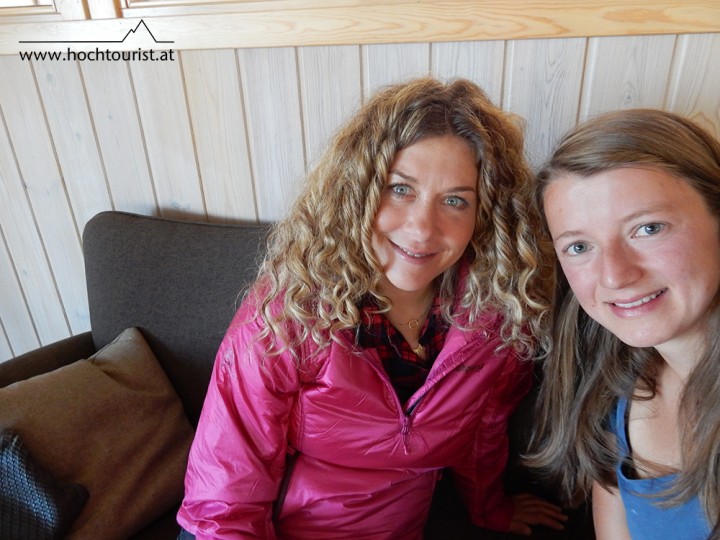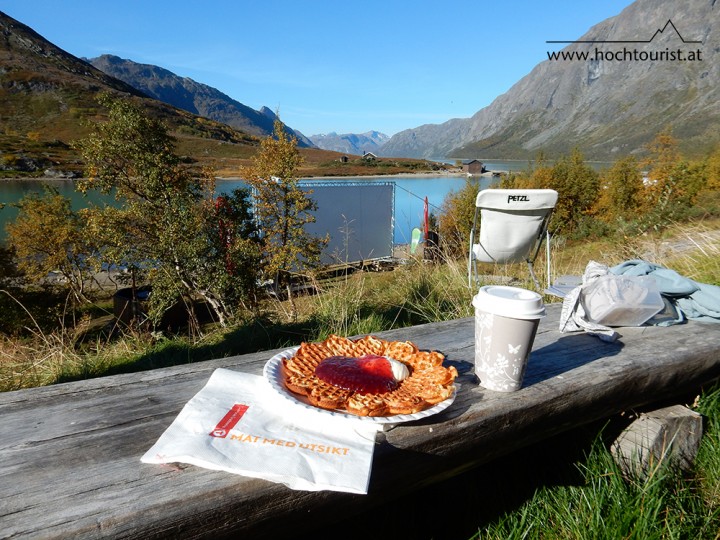“It’s important to build a platform where you stand stable and solid”

Cecilie Skog is the first woman who reached the Seven Summits and both poles. Also, she is the first Norwegian woman who stood on a 8000 meter-peak which was Cho Oyu in 2003. Her life took a sudden turn when her husband Rolf Bae lost his life in an avalanche on K2 in 2008.
Cecilie found back her strength in nature and in being active outdoors. She returned to Greenland, crossed Antarctica on her skis and attempted the North Pole by canoe.
At the Fjellfilmfestival 2014 in Gjendesheim, Norway, Cecilie talked about her adventures, her experiences at K2 and also the time that followed. She challenged the audience with emotional insights to the tragic part of mountaineering and at the same time spread magic inspiration to eager outdoor enthusiastic people. Her talk took place in a beautiful fairytale-like red circus tent, where Cecilie – with only 1.60 meter height and her big curly hair – was in the focus of the arena. She showed breathtaking pictures from the Arctic and Antarctic scenery, funny videos from inefficient skiing in the pack ice towing 2 pulks weighing 127 kg in total and screened moving videos from the moment she and her companions arrived at the North Pole.
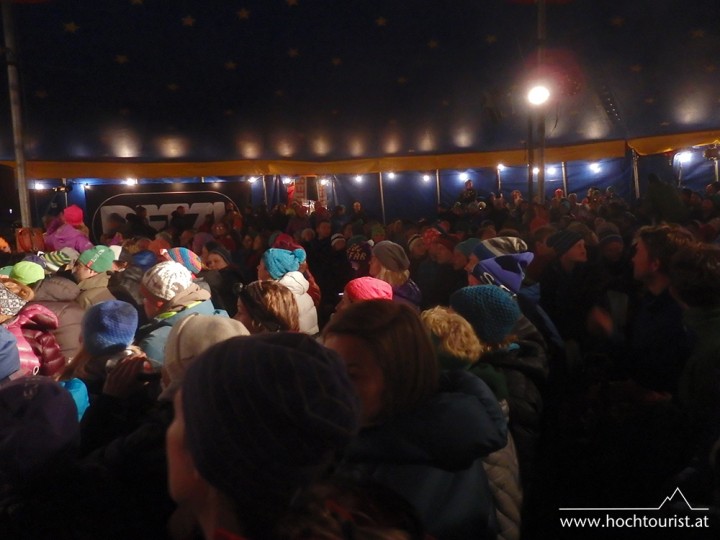
The circus tent is packed with outdoor enthusiastic people waiting for stories from Cecilie about K2 and the Poles.
Norway-correspondent Bernadette was talking to her the next morning about swimming between ice floats in the Arctic, harmony in the outdoors and ice retreat as a consequence of climate change.
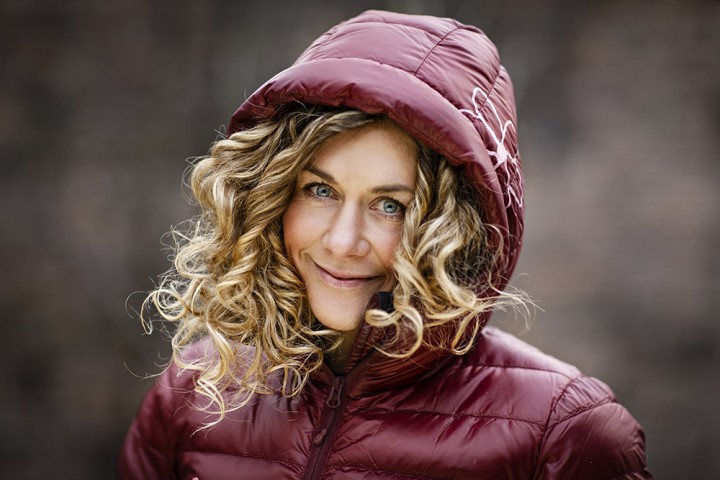
Cecilie Skog, born on 9th August 1974 in Ålesund/Norway. She skied to both Poles and climbed the highest mountains of the continents. Photo (c) Cecilie Skog archive, same as picture in the header.
Hochtourist: Hei Cecilie! Thanks for your public talk yesterday. I really liked, when you were saying, that each one of us writes oneself his’ or her’s own story life. You managed to make your passion also your profession. How did this happen and was there a certain point you decided to take that path?
Cecilie Skog: It all started in my teenage years. My parents had a cabin in the mountains in Sunnmøre where I grew up. There, I started to hike, first with my sister and later with my friends. When I was about 18-19 I really enjoyed being outdoors and began to climb steeper peaks in Sunnmøre. In the beginning I did not feel comfortable and I felt a little bit scarred, but I realized that I had to take small steps towards the summit. It was a new thing to me, being surrounded by so much air and when I was finally sitting on the top of the mountain, I had this enormous good feeling of achievement. The view was just amazing and to sit there with my friends meant a lot to me. I could see all the way back to my home town and my little house, from where I was looking at those mountains most of the time. In this moment, the view changed and I could see down from the top of the mountain and this also changed me: I wanted to visit these mountains more and more.
What happened was, that I took a climbing course to learn more about ropes and finally was able to reach the top of the steepest mountains including climbs. I also took a glacier course to gain skills to cross them. After that, I started to work in the mountains to take people across glaciers in Sunnmøre. Later I had been working on the biggest glacier in Norway called Jostedalsbreen as a glacier guide for 5 years.
That was around the time I started my studies to become a nurse in Oslo. I spent all summers in the mountains and in winter I went back to Oslo to study. It was a good way, which made it possible to keep balance in my life, to have both, working in the hospital and being outside in the mountains.
When I was 21 years old I went abroad for the first time to climb Mt. Blanc. What I discovered was, that my body adapted pretty fast to the lower concentration of oxygen at higher altitude. I got kind of the feeling of arriving home during this climb and that the ascent to Mt. Blanc was something I was able to handle. The mountains I climbed got higher and higher. I didn’t know where I was going at that time. I just wanted to go out, explore and travel with my friends. And I traveled a lot with them to different places around the world to higher and higher mountains, especially with boys from the glacier with whom I was working with.
In 1996, I saw a movie about Mt. Everest at the cinema and of course I have been thinking about that mountain for a long time already. All the stories about the Himalayas, Buddhism and the Sherpas were very mysterious and mystic to me and I was curious about all this impressions I got. I often went to a shop in Oslo, where they have a lot of maps about the Himalayas and one day I bought a map of “Chomolungma” (Tibetan for Mt. Everest) and put it on the wall above my bed. I understood, that someday I will be going to that mountain. But that was many years before I finally went, the map had to hang there for 7 years.
For me, it wasn’t a decision to become a professional mountaineer, it was something that just happened. I became a nurse less and less and I extended from your to year the summer season, where I was constantly in the mountains. Around Easter 2003, I didn’t work as a nurse anymore at all. I have been very fortunate to live like this for almost 12 years now.
Its interesting, also Austrian mountaineer Gerlinde Kaltenbrunner is an educated nurse.
Cecilie Skog: Yes I know! It’s a really good education to have while being in the mountains. I feel more confident to take people with me, because I understand what’s going on in their bodies and I know much about medicines.
Being a professional adventurer brings some public interest in your person and responsibilities towards your supporters and sponsors along. How do you cope with that and is this a challenge for you?
Cecilie Skog: Yes, I always think about that. I am working closely with Bergans, I don’t call them sponsors because we work together. It is important to me that we both want the same things, but of course I feel responsibility when I am out there and have to take decisions that affect other people than only myself. It’s not only the sponsors, but also people that care about me and who are at home thinking of me. I think it’s hard to make a decision without thinking of all those things.
When you are planning a trip or also during a trip, do you sometimes doubt what you are doing?
Cecilie Skog: It’s important to question over and over again what you are doing. Do you really want to do this? Is this meaningful to you? Who do you want to travel with? Why do you want to do it?
To me, it is the most essential part of a successful journey, to plan and think through everything that possibly could happen and how I would deal with it. All that comes with experience and that’s why I think it’s important to not just rush into something. I built up my knowledge over many years, since I was 18. I started climbing, then glacier trips, ice climbing and later long ski trips. I was out a lot in the mountains in winter, when it is more dangerous due to avalanches and certainly also a lot in summer. It’s important to build a yourself a platform, where you are able to stand stable and solid. From that base, you are able to build up your experience and later on, make use of it. When you are out in less traveled areas, like the poles where you do not always have an escape, it is essential to take the right decision and that is a matter of experience.
From all the different trips you did, skiing to the poles, climbing high mountains or crossing Greenland. What experiences do you enjoy the most?
Cecilie Skog: That is the hardest question! There are so many moments I appreciate, especially when you share them with your friends. So, it’s very hard to name one specific thing, but the trip to the North Pole in 2006 is standing out the most. We were such a happy team and the feeling throughout the trip was just so good. Everyone contributed to a perfect team experience, we had a lot of fun and still felt safe. We thought there was no other place we wanted to be right now. It was so different from everything else I had experienced before, because being in the ocean and drifting with the ice is a weird thing. We had to swim between ice floats and after a while I felt more and more comfortable and at one point it felt like home. It was just special, the light was so beautiful, watching a seal in the lead, or polar bear tracks. It’s sad to think that ice is retreating and will disappear in future.
I am a biologist and I sometimes work in the Arctic and there I am facing the consequences of climate change. You are so much out in the ice, do you think about ice retreat and reasons in human behavior for it?
Cecilie Skog: Ja, I think about it, especially now that I have a baby in my tummy. It’s a big responsibility to make this world looking the same as, when we borrowed it from our children. We do not own it, we only borrow it from upcoming generations! I also feel guilty, like everyone else. I am flying a lot, but I try to focus on it in my daily life. And yes, it does make me scared because I go to Greenland every year and see how big the changes in ice cover there are, from year to year.
When I am out on tour I do like the simple life and the harmony that I experience then. From my own experience I find it hard to apply this, when I am back to daily life. How is that for you and do you have any tips for me?
Cecilie Skog: That’s the same for me, it’s so hard! It takes some time to go out in wilderness and find the peacefulness and harmony. When I am out I try to tell myself, that I can try to live like this at home. Unfortunately, it’s much easier to go back into society and be like everyone else. When I am back it takes maybe 3 days and then I am addicted to my phone again (she laughs and continues smiling) I hate that! When I am on a trip I do not care how I look like, but it’s important to me, that my body just works. When I return into society, I don’t care how it works as long as I look good. That’s not good! (laughing)
Can you give me any hope that returning to daily life will get better at a certain point?
Cecilie Skog: Well, maybe it does for some people. I guess you have to be more focused than I am. Maybe I should spend more time on my sailboat! There, I find peacefulness and quietness and I am less distracted by things that usually surround me. And when I visit shops during my sailing trips and think I can’t live without this sweater, I can’t buy it because I do not have space for it on my little boat.
(Smiling) Please, if you do find a way to be more in harmony and less stressful in society please tell me!
Thanks, Cecilie, for taking your time and talking to me!
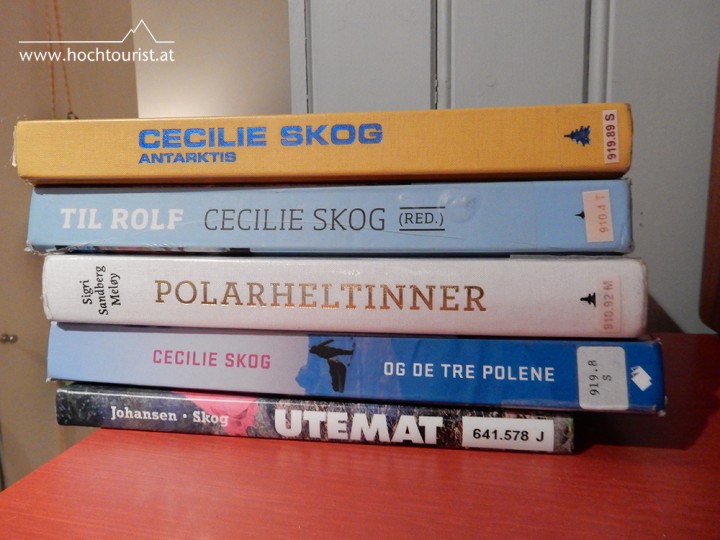
Cecilie published lots of books, mainly in Norwegian. Its a pity, “polar stories” are not as popular in Austria. I can warmly recommend them!
Contest
Register for our Newsletter until 12 October and win 1 of 3 Cecilie Microlight Anoraks.
With friendly support of Bergans of Norway
This anorak was developed for outdoor enthusisasts in cooperation with Cecilie Skog. It is ultralight, absolute windproof and ensures – due to the loose cut and long sleeves – perfekt moves while climbing or mountaineering.
Materials: 100 % Polyamid (Nylon) windproof stretch, highly breathable, fast at drying, light weight and low pack size.
Hoody: solid Hoody with stiffened shield for better adjustments.
Pockets: big horizontal breast pocket, which can be used as compression pack sack.
Others: long tail.
Sizes: XS – XL. For this contest we raffle only the size S.
Weight: 220 g (size M)
Suggested retail prize: € 150,-
Reiseblogger Kodex information: This interview was made without any assignment or initiation of Bergans. We would like to thank Tine Zelass at Bergans Germany, who sent us this marvelous anoraks to give them to our readers, you! Register now and enjoy.

